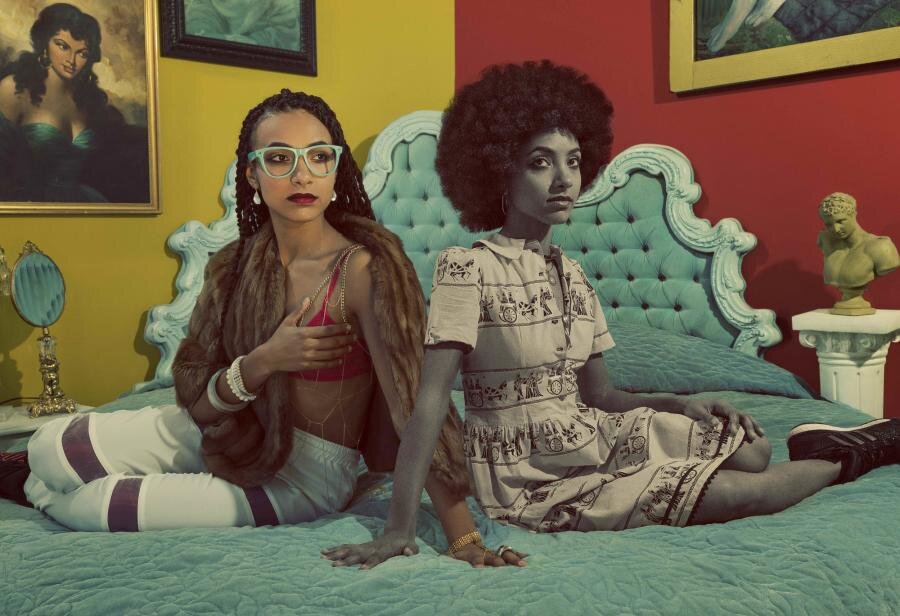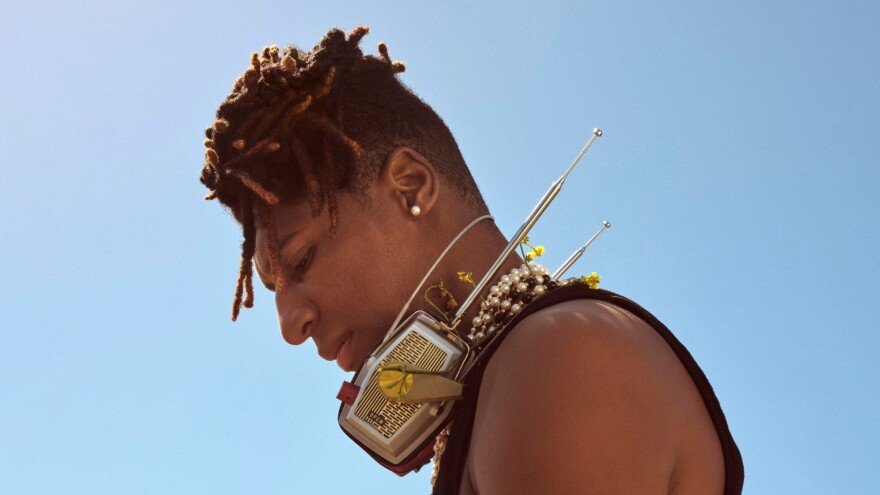Esperanza Spalding Channels Emily for Emily's D+Evolution

Tonight at The Orpheum, the jazz bassist explores a "less evolved" version of herself.
Until recently, Esperanza Spalding hasn’t found her name restricting. Under it, she released four jazz albums including Chamber Music Society, which earned her the Grammy for Best New Artist over Justin Bieber, Florence + the Machine, Mumford and Sons, and Drake. Her 2012 album, Radio Music Society, lived in the place where jazz, R&B, and funk coexist, and a year later, she sang guest spots on Janelle Monae’s The Electric Lady and Bruno Mars’ Unorthodox Jukebox. She even found time in there to perform as part of Joe Lovano’s Us Five.
Spalding will perform tonight at The Orpheum, but not under her own name. She’ll play as Emily’s D+Evolution, and the set will feature music from the album of the same name. For the album and live shows, she adopted a new persona complete with a new wardrobe and look. “Emily” is not only central to the album; she effectively made the album. Marcus J. Moore reviewed it for Pitchfork, writing:
"See this pretty girl, watch this pretty girl flow," Spalding asserts boldly at the top of "Good Lava," the first track and mission statement. Using a dissonant guitar riff, thumping drums, and lurching time signature, it almost feels like a dare to stick around. The album has the feel of a nervy gauntlet throw, seething with the sort of ferocity that only comes from time spent alone, far away from the limelight. These are exuberant, confrontational songs, amplified in the same sort of rock/funk hybrid style that brings Prince and Janelle Monae to mind.
For me, better reference points are Joseph Bowie and Defunkt, Oliver Lake and Jump Up, and the early ‘80s New York jazz artists who were feeling the new musical zeitgeist. Their music doesn’t sound like Emily’s D+Evolution, but it works in the same way with an a musical restlessness that stretches beyond any one genre with at least a side eye toward the larger musical marketplace. It’s not exactly pop, rock or funk, but it can be catchy, funky, and it can rock. It’s tempting to assign some measure of intention to that, but in interviews, Spalding doesn’t caution against that, but it’s clear that her process was less directed than that.
We “spoke” recently via email.
In interviews, you have described Emily’s D-Evolution as a “less evolved version of myself.” What did you mean by that?
By that I mean a less cultivated, structured, and solidly identified part of my performing self. D+Evolution is the process of dismantling established forms and rebuilding with the pieces. So, I think of Emily as an un-assembled phase of this transition. She's like my tabula rasa, where all the previously present layers of content have been shaken off, then get freshly re-composed onto the blank slate.
Could you have made this music without a persona as the focal point?
I can't say absolutely. The music was always tied with Emily as the performer, but obviously it comes from me (Esperanza).
How did the look relate to the musical expression of the persona? Did you record in the glasses and braids?
I did record with glasses and a hairstyle that responds to gravity (pressed, hanging hair, or swaying afro twists, or heavy extension twists). Part of the fun, and new energy for me in this project was the challenge of giving Emily her own sound and voice. So, it helped to dress differently in the studio. Part of what I want to explore with this project is getting out of my head, and expressing from my guts and feet. Having a hairdo that responds to gravity, meaning I feel it's weight moving down from my scalp, helped me remember to move my upward spiraling head-energy down into my guts—back into the inspirational root of this project.
The glasses are about seeing the world with fresh eyes. I'm playing a role in which the character sees my life and surrounding culture with different eyes.
Live, I become Emily, letting "her" experience unfold the adventure of music and group-story on stage, so yes it really helps to be dressed as her so I can explore more than what I'm accustomed to as Esperanza on stage.
Your recent albums have had clear conceptual frameworks distinct from each other. Is that tied to the way you create? If not, what’s behind the movement from concept to concept to concept?
In my view, there is no process of moving from one concept to the next. Each unique album arose from an idea I was exploring creativity, conceptually or personally. Or, they arose out of a body of work that seemed to be expressing something as a whole.
What are the musical roots of Emily’s D+Evolution? Are their artists whose influence on you is clearer here than on other albums?
On this album, I got to enjoy a creative process without any "concept" during the composition/recording phase. My only objective was to play, sing, arrange and record the songs so that they would reflect my initial inspiration of Emily and her energy/character.
I don't see the point of listening for the influence of other artists in my work, although in "I Want it Now,” I clearly hear the influence of studying the piano reductions of Wayne Shorter's symphonic work. I never used any kind of triadic harmonic approach like that before the arrangement of that song. Beyond that, I don't think I sound like anyone but me. People have referenced Joni, but if you really listen to her, we don't sound like each other at all. Since there aren't very many high voiced, melodically intricate singers out here right now, I guess she's the "closest" comparison. And, for those comparison addicts out there, she's an easy one to lazily call on because of the assumed commonality of "jazz" in our respective music. Her genre dismembering albums do give me great courage to keep exploring and sharing my work according to what my inspiration dictates.






